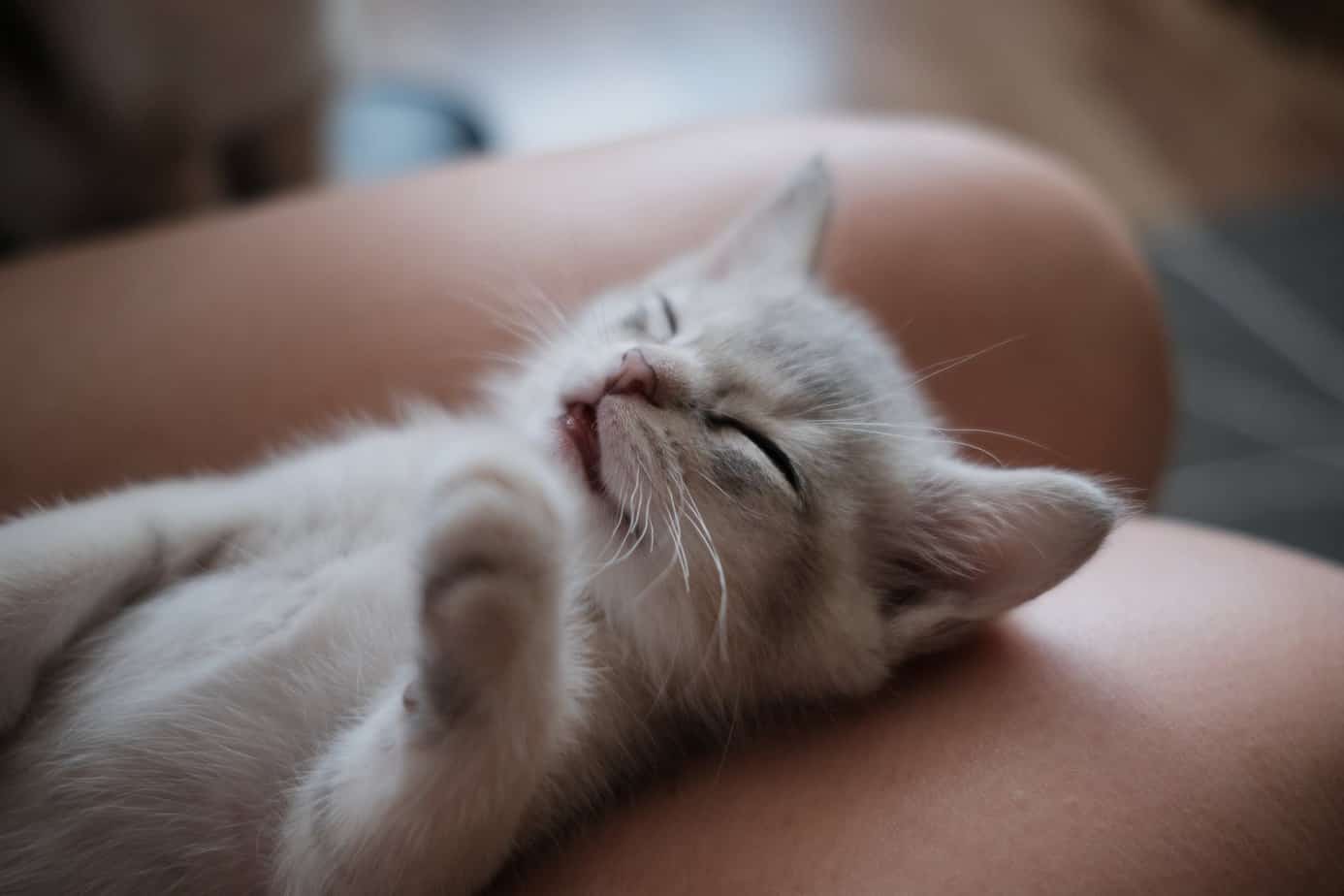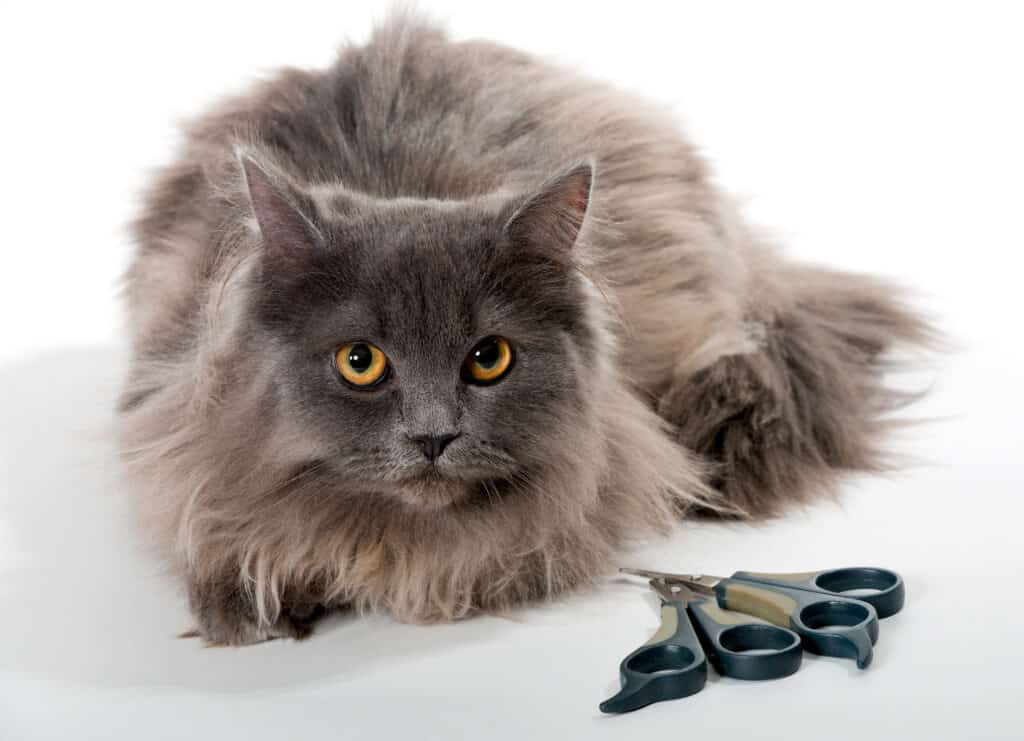Russian Blues are known for being highly intelligent, inquisitive, and patient cats. This means that they can definitely be trained with adequate motivation and positive reinforcement. Read on to find out the best ways to train your Russian Blue.
How to Train a Russian Blue Cat?
The key to training a Russian Blue cat, or any cat for that matter, is patience and repetition.
Scientists are divided on how smart cats are, but it’s clear that cats have the cognitive functions required to learn things.
The problem is that they are impatient and are, unlike dogs, not driven by the desire to please their owners.
For this reason, the key to teaching a cat something is to make it interesting for them. It’s best to start with easy tasks followed by rewards. Then slowly move up in complexity. Make it engaging so that your cat doesn’t lose interest. Don’t drag training sessions on for too long. Keep them short but frequent.
Tools and Equipment to Help with the Training Process
There are a few useful tools and pieces of equipment that will help you keep your Russian Blue adequately entertained and engaged in the training process. Remember not to shout or yell at your cat unless there is a danger because this will stress them out and make training impossible for a time.
Clicker Training
Clickers make a distinct sound. You can use the clicker when the cat does something desired. The Russian Blue then begins associating the sound with good behavior and will do the behavior – whether it be a common act or a trick – more often. Clicker training works best when also combined with verbal praise.
Reward Training
This is where the treats come in. In place of the clicker, give the Russian Blue a treat when they perform the desired behavior or expected activity.
In the case of treats, be aware that Russian Blues are prone to getting overweight easily, so it is best to balance treats with their food appropriately, so they do not take in too many calories.
Alternatively, if you provide treats for athletic and agility tricks, they may be exactly what they need.
Target Training
This type of training stems from the Russian Blue’s desire to play and bond with its owners. They love to impress.
The best way to practice this is to get an object that interests your Russian Blue, like a toy or a treat. Then place or hold this in a position where they have to try and get it or find it.
Target training is something that cats love to do because of the exercise, the reward and praise they get from their trainer when they get it right.
Target training is usually used for athletic or agility training but can also be used to find and retrieve items. Russian Blues can be trained to fetch.
You can also use a combination of clickers, treats, and targets for training.
Types of Training Necessary
Tricks are great to teach your cat, but sometimes you need to train them to do specific behaviors, like training a kitten to use the litterbox or not scratch your couch, for example.
Litter Training
Russian Blues are known for being fastidious and picky with litter boxes. When training them, ensure the litter is clean and appropriate for their age. You can encourage your Russian Blue to do its business in the litter box by putting them in the litter box and using their paws to “scratch” at the litter.
Usually, instinct kicks in, and they will do the rest themselves. You can also use clickers to help with this training process.
Leash Training
Not everyone needs to train their Russian Blue to walk on a leash. Russian Blues are not the most active of cats, but sometimes it is nice to take them on leashed adventures.
The first step to leash training is to let them examine the leash and harness without getting spooked by it. Then, after they have grown accustomed to the leash, you can put them in the harness.
Be calm and soothing with them as you put it on because this is never any cat’s favorite part.
Leash training is best done with some combination of treats and cuddles. After some time, the Russian Blue will be fine with the leash, and you can take them on adventures.
Obedience Training
Russian Blues are already relatively calm and quiet cats who are not prone to being unruly. However, all cats know what being naughty is, and Russian Blues are no exception.
Obedience training is best done early on while they are young. Remember to be patient with them as they are patient with you. Praise them often when they achieve even one step in the desired direction.
If the Russian Blue is being unruly, be firm with them and stop the behavior. Do not under any circumstances hit the cat as they are much smaller than you are.
Also, shouting tends to be counterproductive. But a firm “no” and redirecting them should be enough to handle most situations.
Things to Keep in Mind
Russian Blues aim to please, which makes them the ideal cat to train to do more than the other average cat.
Remember, beyond necessary training, training for tricks should be a fun experience for both you and your cat. Do not stretch training sessions too long, lest you exhaust yourself and risk making your Russian Blue hate training.
Essential accessories for cat training
Why we like this product
This is a great starter kit when you’re thinking about training your cat or kitten.
It contains a clicker, a target stick, and an instruction booklet that helps you and your cat hit it off the right way.
Check out this product on Amazon.
Our Final Thoughts
Because Russian Blues are intelligent cats that desire a bond with their owner and need stimulation, training is an excellent solution for this situation.
They will obviously need to be trained to use the litter box and perhaps need some obedience and leash training. However, you can also train them to do tricks with a little effort.
When done right, training your cat should be enjoyable for you and your cat to bond and have some fun.
Keep training sessions short but frequent. When you feel your cat is not in the mood, postpone a session rather than forcing it.
Good luck and have fun!
Love Cats?
Then you will also love our other content. Have a look at these other posts on our website.
-

10 Ways to Make Your Cat Live Longer
The oldest cat to ever live passed away at the old age of 38. On average, household cats live between […]
-

12 Reasons Why Siamese Cats Cry at Night
Siamese cats are a popular breed of cats that many people choose to have as pets. Perhaps you have heard […]
-

15 Incredible Ways That Cats Show Affection For Humans
Wondering how cats show their affection for humans? We have listed several incredible ways that cats are trying to show their love for us.




